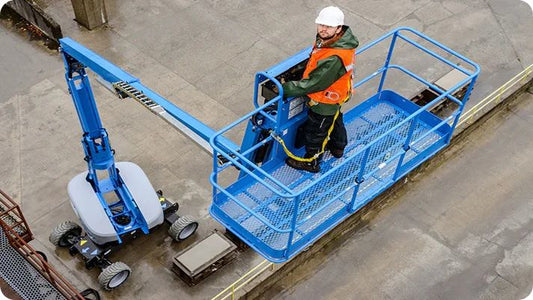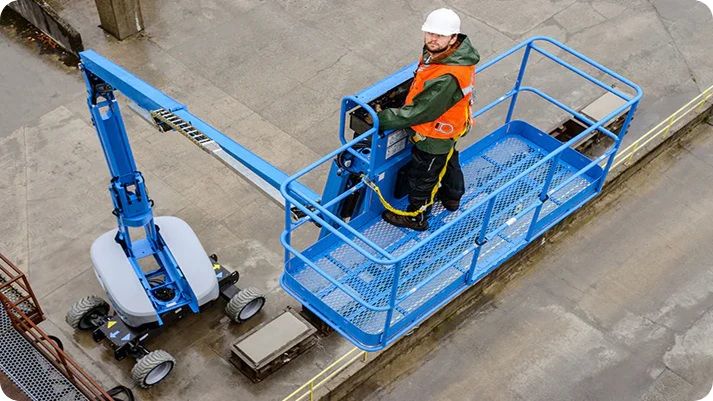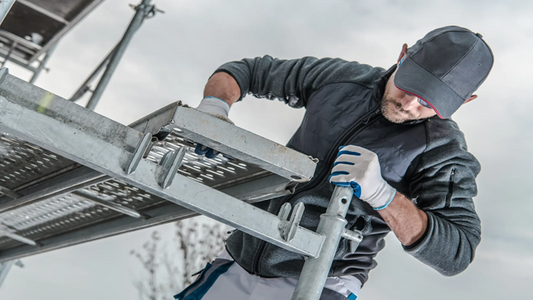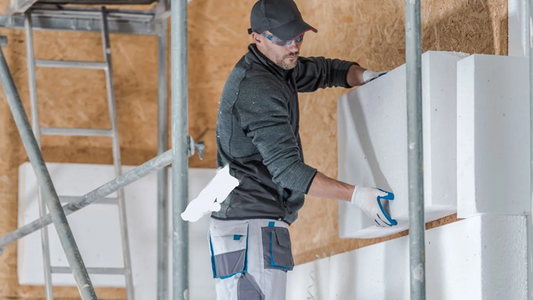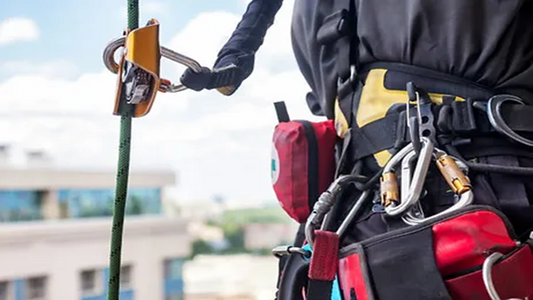Working on scaffolding involves both responsibility and risk. To create a safe working environment, it is important to follow applicable regulations, use the right equipment and have the necessary training. Here is an overview of the most important things you should know about the assembly, use and safety of scaffolding.
Important considerations when working on scaffolding
1. Correct assembly
Scaffolding should always be erected in accordance with regulations and the manufacturer's assembly instructions. It is crucial that all parts are securely attached and that the scaffold is placed stably on a surface that can withstand the load.
2. Training requirements
Anyone who builds or uses scaffolding must have documented training. Proper training reduces the risk of accidents and ensures safe use.
3. Personal protective equipment
When working at height or when there is a risk of falling, it is mandatory to use personal protective equipment such as a helmet and fall protection harness.
4. Employer's responsibility
Employers are obliged to ensure that the health and safety of their employees is safeguarded. This involves risk assessments, clear routines and measures that prevent injuries.
Regulations and industry standards
Working on scaffolding is regulated by several laws and standards. Some of the most important are:
- Regulations on the performance of work, Chapter 17 (Scaffolding Regulations): Regulates requirements for competence, assembly, use and inspection of scaffolding.
- European standards ( EN 1004 and EN 12811 ): Sets requirements for the construction and safe use of scaffolding.
- The company's own HSE routines: Many businesses have internal rules that may be stricter than the law.
Competence requirements and scaffolding courses
The regulations require documented training for anyone who erects or uses scaffolding over 2 meters. Previously, the limit was 5 meters, but this has now been tightened. The requirements are divided into different levels:
- Scaffolding course 2–5 meters : At least 7.5 hours of theory + 7.5 hours of practical training.
- Scaffolding course 2–9 meters : At least 15 hours of theory + 15 hours of practice.
- All scaffold heights ( Scaffolding Assembler Course ): 36 hours of theory + 72 hours of practical training + 6 months of practice.
Note: If the scaffold is built in a way that deviates from the manufacturer's standard layout, full assembly training is always required, regardless of height.
Requirements for scaffolding users
Those who use scaffolding must also be trained in safe use, including an introduction to assembly, disassembly and daily inspections.
The Working Environment Act and responsibilities
The Working Environment Act forms the basis for a safe working environment.
-
Employer: Responsible for risk assessment, safety measures and employee training. If the legislation is not followed, the employer may be fined or punished.
- Employee: Must follow routines, use required protective equipment, and report deficiencies or dangerous situations.
Safety on scaffolding is about cooperation: the employer must facilitate safe conditions, and the employee must contribute by following rules and being attentive in everyday work.
Technical requirements for scaffolding
In order for scaffolding to be safe, several technical rules and standards apply:
- Construction and certification: Scaffolding must be built according to European standards ( EN 12810 and EN 12811 ) and be certified by an approved body.
- Load requirements: The scaffolding must withstand the weight for which it is designed.
- Stability: Must be stable and withstand weather and wind.
- Maintenance and inspection: Scaffolding must be inspected regularly, and damage or defects must be repaired immediately.
Scaffolding course at GTM Kompetanse
At GTM Kompetanse you will find online and practical courses that cover the statutory requirements for scaffolding training. We offer:
- Scaffolding assembly course (from 2 meters and up).
- Training for scaffold users .
- Courses in lifting , fall protection , hot work , dangerous hand tools and more – available in multiple languages.
👉 With proper training, you reduce the risk of accidents and obtain the documentation required by regulations.




